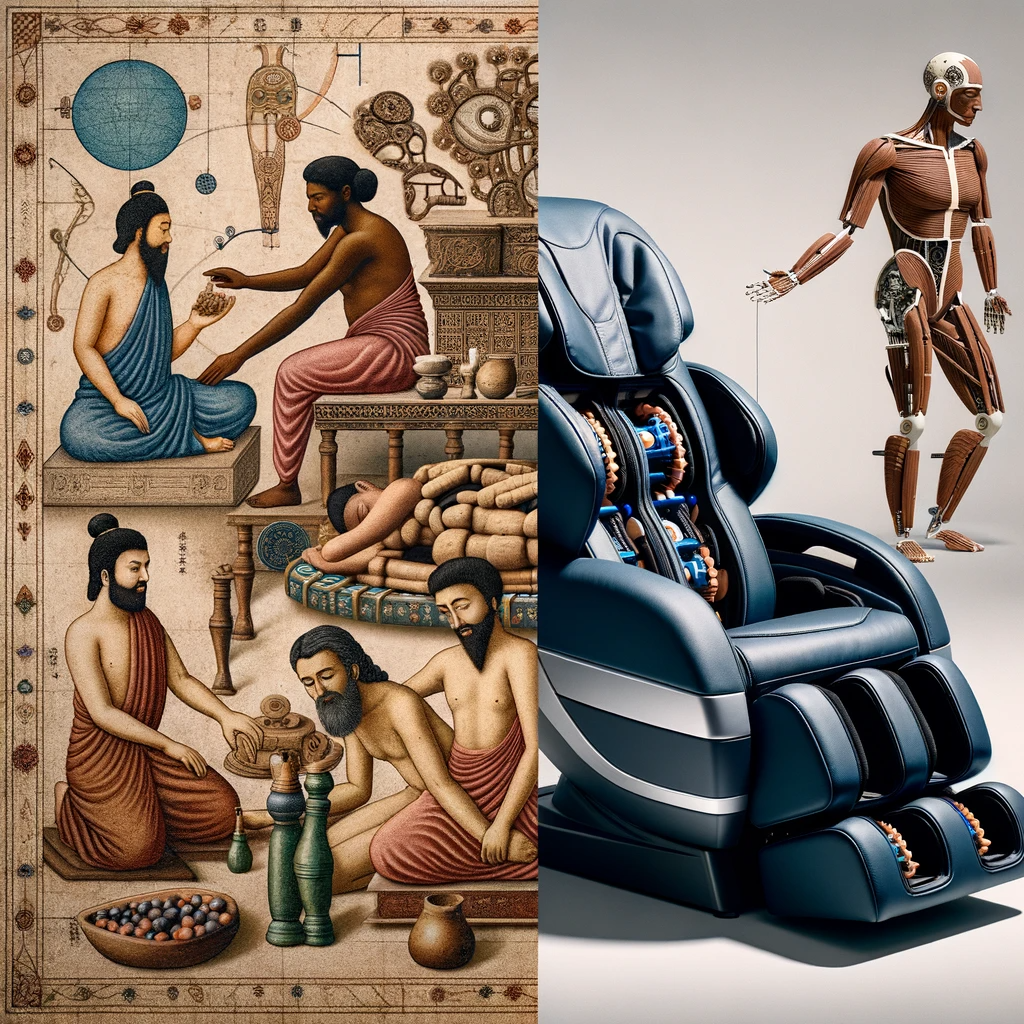From age-old manual massages to today’s high-tech chairs – how did we get here? Unearth the journey of massage evolution and the genius of today’s chairs!
Massage is an age-old art form, dating back thousands of years. But how did we move from traditional hand massages to the automated luxury of today’s massage chairs? More importantly, how do these chairs emulate the human touch so accurately in terms of “How Massage Chairs Work“? In this deep dive, we’ll explore the historical evolution of massage and reveal the engineering brilliance of modern-day massage chairs.

A Glimpse into the Past: Ancient Massage Techniques
Before delving into the intricacies of today’s chairs, it’s essential to understand the roots of massage:
- Egypt and China: As early as 2700 B.C., ancient civilizations like Egypt and China documented techniques resembling massage therapies. Hieroglyphics and ancient texts depict the importance of touch in healing and relaxation.
- Greece and Rome: The Greeks enhanced massage techniques, often integrating them into athletic training routines. The Romans recognized massage as a way to treat injuries and ailments, with prominent physicians recommending it.
- Middle Ages and Renaissance: Throughout these periods, massage continued its prominence in many cultures, from the Turkish hammams to European health retreats.
Transition: The Bridge Between Manual and Mechanical
The journey from manual massage to mechanical assistance wasn’t immediate:
- Early Devices: The late 19th and early 20th centuries saw the invention of mechanical massaging devices. While rudimentary, these paved the way for today’s advanced chairs.
- Increased Popularity: Post World War II, as stress-related ailments became prevalent, the demand for therapeutic massage solutions rose, fostering innovation in mechanical aids.
Modern Mechanics: The Genius of Today’s Chairs
The technological advancements in the 21st century have elevated massage chairs to emulate human touch like never before:
- 3D Rollers: These rollers move in three dimensions, providing depth, width, and height movement, closely imitating the dynamic hands of a therapist.
- Air Compression Systems: Using airbags, these systems create a squeezing and releasing sensation, stimulating muscle relaxation and blood circulation.
- Zero Gravity Positioning: Borrowed from space research, this position distributes weight evenly, offering deep relaxation and improved massage efficiency.
- Body Scanning Technology: Before initiating a massage, modern chairs scan the user’s body to adjust rollers and nodes for a personalized experience.
- Heat and Vibration: Integrated heating systems soothe muscles, while vibration mechanisms target deeper tissue layers.
Conclusion: The Blend of Tradition and Technology
Today’s massage chairs are marvels of engineering, combining ancient wisdom with modern mechanics. As we relish the comfort they offer, it’s awe-inspiring to reflect on the millennia of evolution behind each knead, roll, and vibration. From the hands of ancient healers to the cutting-edge chairs of today, the journey of massage is a testament to human innovation and the timeless quest for relaxation and healing.


